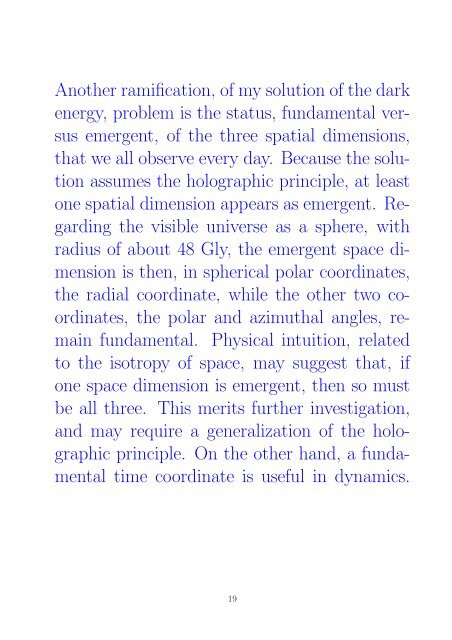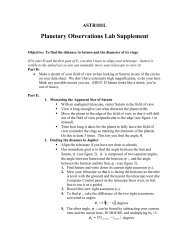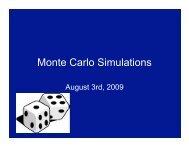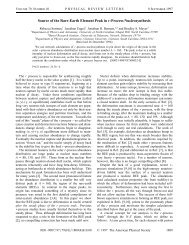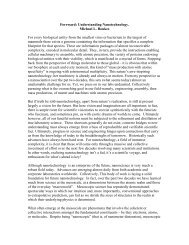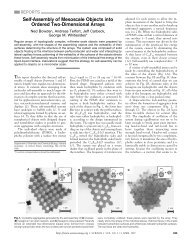holographic principle and the surface of last scatter
holographic principle and the surface of last scatter
holographic principle and the surface of last scatter
You also want an ePaper? Increase the reach of your titles
YUMPU automatically turns print PDFs into web optimized ePapers that Google loves.
Ano<strong>the</strong>rramification,<strong>of</strong>mysolution<strong>of</strong><strong>the</strong>dark<br />
energy, problem is <strong>the</strong> status, fundamental versus<br />
emergent, <strong>of</strong> <strong>the</strong> three spatial dimensions,<br />
that we all observe every day. Because <strong>the</strong> solution<br />
assumes <strong>the</strong> <strong>holographic</strong> <strong>principle</strong>, at least<br />
one spatial dimension appears as emergent. Regarding<br />
<strong>the</strong> visible universe as a sphere, with<br />
radius <strong>of</strong> about 48 Gly, <strong>the</strong> emergent space dimension<br />
is <strong>the</strong>n, in spherical polar coordinates,<br />
<strong>the</strong> radial coordinate, while <strong>the</strong> o<strong>the</strong>r two coordinates,<br />
<strong>the</strong> polar <strong>and</strong> azimuthal angles, remain<br />
fundamental. Physical intuition, related<br />
to <strong>the</strong> isotropy <strong>of</strong> space, may suggest that, if<br />
one space dimension is emergent, <strong>the</strong>n so must<br />
be all three. This merits fur<strong>the</strong>r investigation,<br />
<strong>and</strong> may require a generalization <strong>of</strong> <strong>the</strong> <strong>holographic</strong><br />
<strong>principle</strong>. On <strong>the</strong> o<strong>the</strong>r h<strong>and</strong>, a fundamental<br />
time coordinate is useful in dynamics.<br />
19


